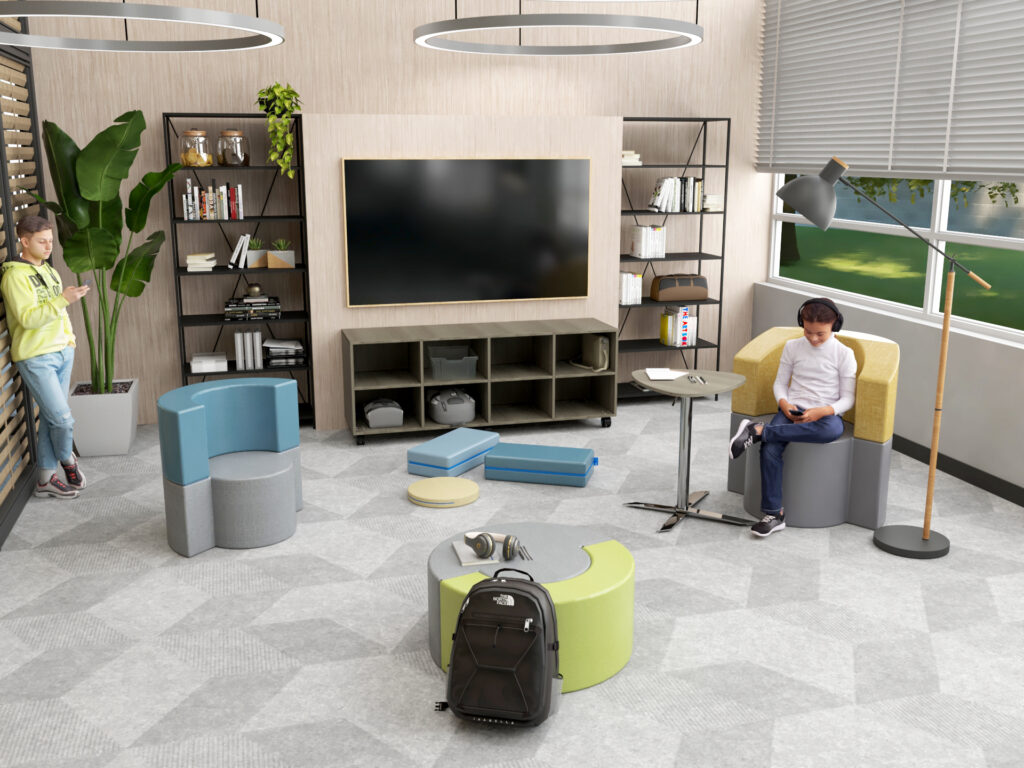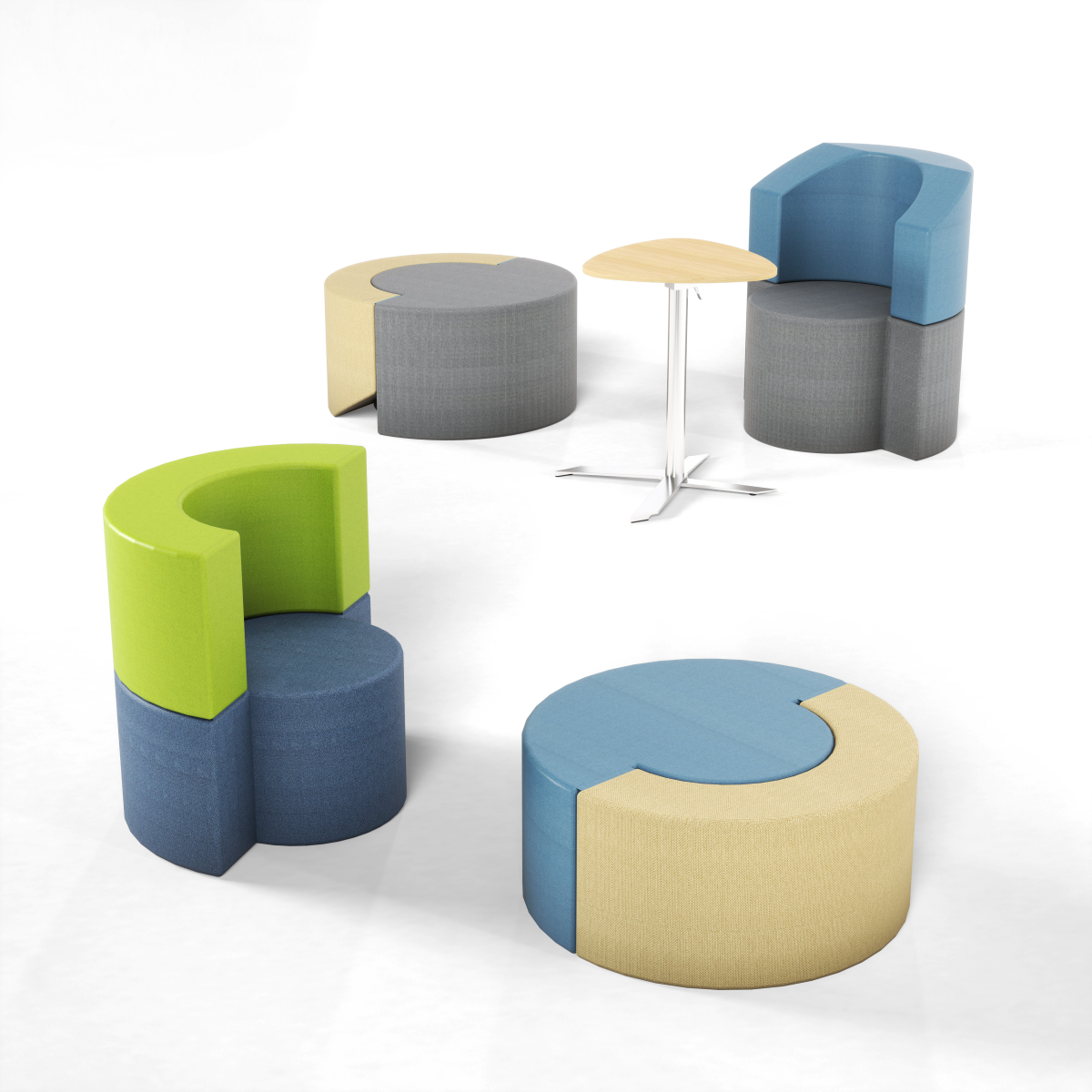Flipping the Script
Director of Education – Hannah Tejeda
Design shapes our autonomy in profound ways. Every interface, space, and system we interact with either expands or constrains our choices, often invisibly.
Good design empowers us by revealing possibilities rather than dictating paths. It provides frameworks for decision-making without predetermining outcomes.
Consider how a well-design park offers multiple routes and activities while maintaining a cohesive experience. Paradoxically, thoughtful constraints can enhance freedom. By eliminating excessive options and noise, design can focus attention on meaningful choices. The minimalist workspace removes distractions to deepen focus; a carefully curated menu makes dining more enjoyable than an endless list of options.
Encouraging this level of decision-making and autonomy can be done by incorporating the purpose of several pieces, into one. The most effective design acknowledges this responsibility: to create environments that respect human agency while providing structure for meaningful action.
Flipped
Creative Director & Chief Architect – Franco Modolo
The FlipOtt design process began with a desire to create multifunctional furniture that could adapt to various needs within collaborative, educational, and communal spaces.
This process started by recognizing the growing demand for flexible solutions which honor autonomy and spark curiosity. The overall concept aims to provide users with a comfortable, space-efficient option that can easily transition between functions. This included brainstorming sessions to identify key needs: flow of space, preferential seating, movement, connection to activity.
The modularity of the design allows for three positions, providing versatility for both relaxed seating and functional storage, while the washable, durable cover ensures longevity.
Testing focused on comfort, experience, and durability to ensure the FlipOtt could stand up to heavy use in dynamic environments. The result is a smart, adaptive piece that enhances both aesthetics and functionality.
FlipOtt: An Adventure in Engineering
Engineer – Arun Surujpaul
Keeping the pieces together was the real challenge. Traditional hinges were too clunky. Trying to sew it together was too stiff. Luckily the upholstery team had a genius idea of a layered vinyl hinge, inspired by the flexible plastic hinges on everyday objects. The result was a hinge that bends and moves effortlessly but doesn’t wear out or break down with repeated use. It’s strong enough to hold its shape but soft enough to feel seamless, because let’s be honest, no one wants a chair that fights back.
Getting the foam density just right was another adventure. Too firm, and it wouldn’t be comfortable; too soft, and it wouldn’t hold its form. We played Goldilocks, testing different densities until we found the perfect balance of support and comfort. Then, we reinforced the vinyl hinge at key stress points with stitches, so it could handle all the flipping, folding, and fidgeting that happens in an active classroom.
And just like that, FlipOtt was born, a piece of furniture that’s as flexible as the learning spaces it belongs in. Need a chair? Flip it. Want an ottoman? Fold it back down. It’s simple, fun, and endlessly adaptable, proving that sometimes, the best designs start with a little hands-on curiosity.
Design Considerations: Functionality and Comfort for Learning
A&D Liaison – Adriana Mezquitti
When designing FlipOtt, several key considerations were made to ensure it would be both functional and comfortable.
Design elements that make FlipOtt the perfect addition to any learning space:
- Fluid Transformation for Increased Flexibility
FlipOtt can seamlessly transition between a footrest or extra surface and a comfortable lounge chair. Adaptability is crucial in learning environments. Spaces must cater to various activities. The intuitive flip mechanism ensures the transition is effortless, minimizing disruption to the learning process. - Ergonomic Design for Comfort and Focus
FlipOtt delivers comfort in spades! Engineered as a full-foam structure, the piece provides excellent ergonomic support for students, ensuring that they can sit comfortably for extended periods. Whether used as a footrest or as a chair, FlipOtt is designed to promote good posture, which is essential for maintaining focus during lessons or study time. The responsive foam structure also adapts to the user’s body, providing the right balance of support and solace for various positions. - Durability and Easy Maintenance
Durability is a key concern for any learning space. FlipOtt features a washable, tactile cover that is both durable and easy to maintain. In an educational space, where spills, stains, and constant use are inevitable, this washable feature establishes the piece will remain in top condition for years to come. Facilitators and learners can be confident that FlipOtt will withstand the demands of a busy environment while maintaining its sleek, professional appearance. - Soft, Inviting Curves and Sculptural Form
FlipOtt is aesthetically pleasing; featuring soft curves and a sculptural form that can enhance any learning environment. Its modern and minimalist design blends with a variety of classroom models, from traditional to more innovative, tech-driven spaces. FlipOtt serves as both a seating solution and sculptural addition, helping to create an environment that is beneficial for focused learning and creative collaboration.
Let’s Go Deeper…
Ownership of space creates deeper engagement with material and promotes resilience when facing obstacles. Practicing autonomy in educational design prepares learners for a future where independent thinking and self-direction are increasingly valuable.
Integrating vital pieces such as FlipOtt, helps create meaningful connections with space and self. With its educational, conceptual, engineering, and design considerations – FlipOtt is flipping the script on learning space design and autonomy.
SOURCES
“The Design of Everyday Things” by Don Norman
“Hooked” by Nir Eyal
“The Paradox of Choice” by Barry Schwartz
“Nudge” by Richard Thaler and CAss Sunstein




